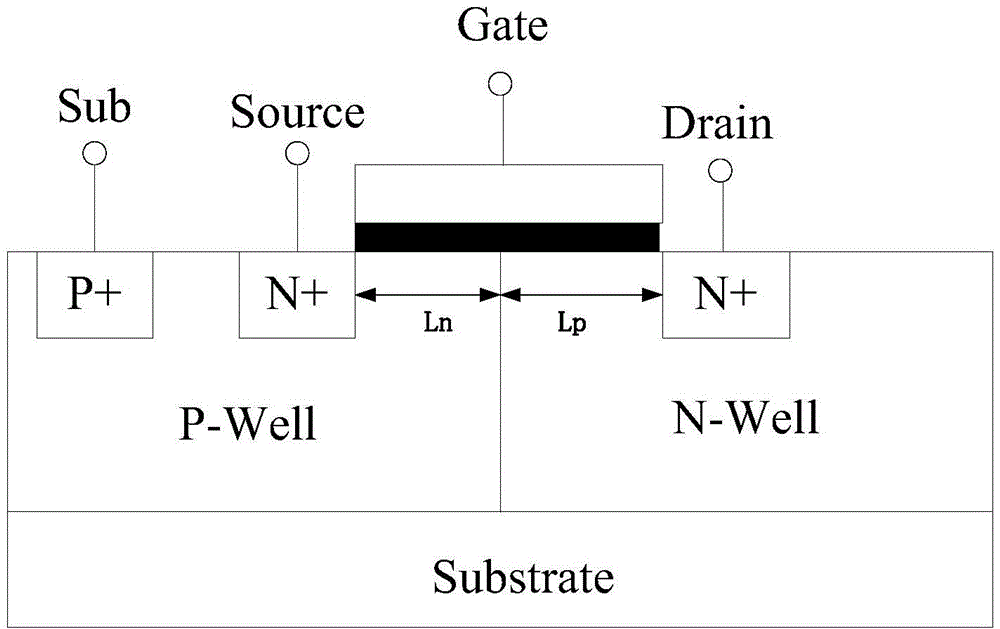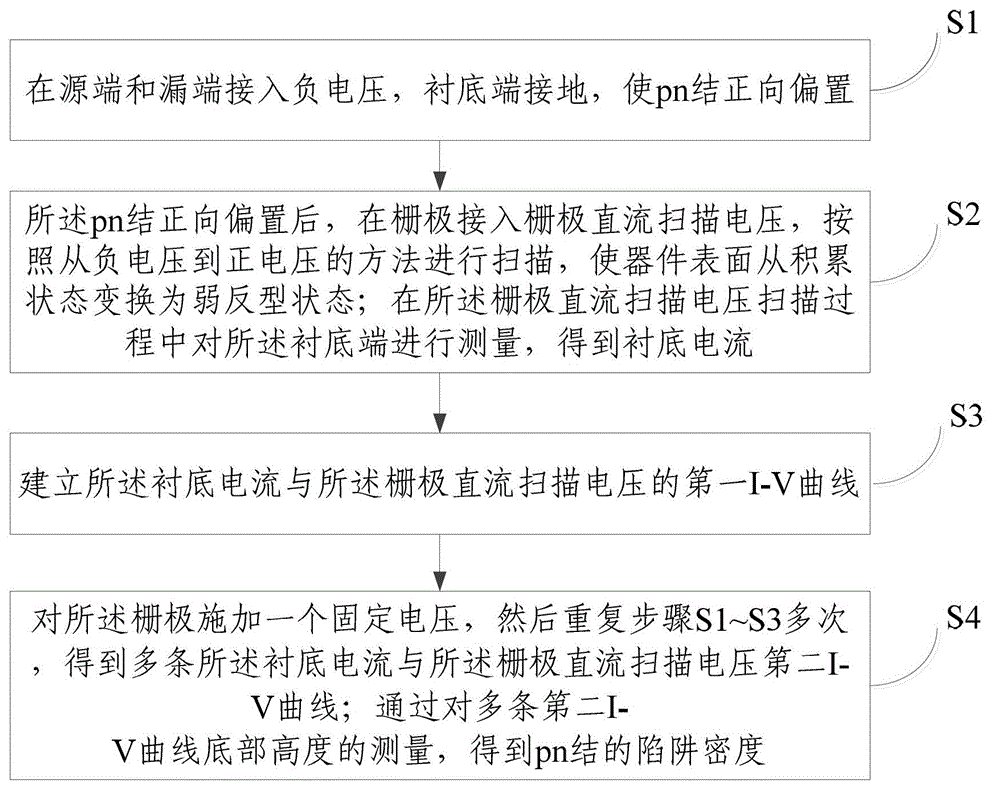Test method and device for gate oxide layer trap density and position
A test method and trap density technology, applied in the direction of semiconductor/solid-state device test/measurement, etc., can solve the problems of not considering the trap density of pn junction and the lack of trap density test.
- Summary
- Abstract
- Description
- Claims
- Application Information
AI Technical Summary
Problems solved by technology
Method used
Image
Examples
Embodiment 1
[0041] Such as figure 1 As shown, a method for testing gate oxide trap density and position includes the following steps:
[0042] S1, a negative voltage is connected to the source and drain terminals, the substrate terminal is grounded, and the pn junction is forward biased;
[0043] S2. After the pn junction is forward biased, the gate DC scan voltage is connected to the gate, and the scan is performed from negative voltage to positive voltage, so that the surface of the device is transformed from an accumulation state to a weak inversion state; Measuring the substrate end during the gate DC scanning voltage scanning process to obtain the substrate current;
[0044] S3. Establish a first I-V curve of the substrate current and the gate DC scan voltage;
[0045] S4. Apply a fixed voltage to the gate, and then repeat steps S1 to S3 multiple times to obtain a plurality of second IV curves of the substrate current and the gate DC scanning voltage; by comparing the plurality of second IV ...
Embodiment 2
[0072] A gate oxide trap density and position test device, which is characterized by comprising an n-type MOSFET and a corresponding p-type gate oxide capacitor, or a p-type MOSFET and a corresponding n-type gate oxide capacitor; the n-type MOSFET and the corresponding n-type gate oxide capacitor The corresponding p-type gate oxide capacitance and the junction of the p-type MOSFET and its corresponding n-type gate oxide capacitance form a pn junction.
[0073] As shown in Figure 3(a), taking the n-type gate oxide interface trap density test device as an example, the left side of the n-type test device is the n-type MOSFET device part, and + , P-well and gate constitute the source, substrate and gate of the test device of the present invention. The right side of the test device is the p-type gate oxide capacitor part, which is composed of n + , N-well and gate constitute the drain, substrate and gate of the device of the present invention. The gate is shared, thus forming a gate o...
PUM
 Login to View More
Login to View More Abstract
Description
Claims
Application Information
 Login to View More
Login to View More - R&D
- Intellectual Property
- Life Sciences
- Materials
- Tech Scout
- Unparalleled Data Quality
- Higher Quality Content
- 60% Fewer Hallucinations
Browse by: Latest US Patents, China's latest patents, Technical Efficacy Thesaurus, Application Domain, Technology Topic, Popular Technical Reports.
© 2025 PatSnap. All rights reserved.Legal|Privacy policy|Modern Slavery Act Transparency Statement|Sitemap|About US| Contact US: help@patsnap.com



